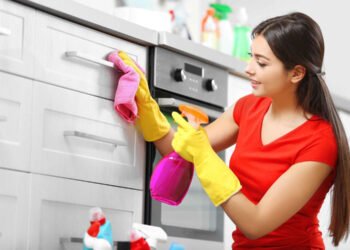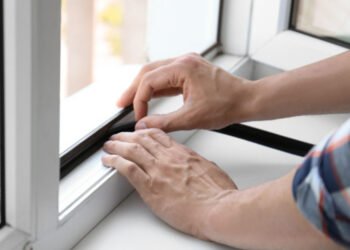In the era of YouTube tutorials and home improvement blogs, the DIY trend has seen a dramatic rise in popularity. Many homeowners are tempted to tackle repairs themselves with the hope of saving money and adding a personal touch to their living spaces. However, not all home repair projects are suitable for DIY due to the potential risks involved. Certain tasks can be dangerous, leading to serious injuries or substantial damage to your property if not handled properly. This article explores some of the home repairs that are best left to professionals, ensuring both your safety and the integrity of your home.
1. Electrical Repairs
Electrical work is one of the most hazardous tasks to attempt without proper training and equipment, so it’s always best to hire a qualified deniliquin electrician. The risk of electrocution is high, especially if you’re not familiar with your home’s electrical system. DIY electrical repairs can also lead to mistakes that might not immediately cause injury but could create serious risks over time, such as electrical fires or short circuits. Whether it’s installing new outlets, replacing a home’s wiring, or even fixing a simple light fixture, the stakes are too high for guesswork. Professional electricians have the necessary knowledge and tools to perform these jobs safely and effectively.
2. Plumbing Repairs
While fixing a leaky faucet might be within the average homeowner’s reach, more complex plumbing tasks like re-piping or installing a new toilet can become problematic when attempted without the necessary skills. Mistakes in major plumbing repairs can lead to leaks that cause extensive water damage or create conditions conducive to mold growth. With help from Bellows plumbing, Heating, Cooling & Electrical, repairs don’t have to be a chore. Their professionals ensure that plumbing work meets industry standards and local building codes, which can save you from costly mistakes and future complications.
3. Gas Appliance Repairs
Working on gas appliances, such as stoves, furnaces, or water heaters, involves substantial risk. The improper handling of gas lines can lead to leaks, which pose a serious risk of fire or explosion. Additionally, improper installation or repair can result in carbon monoxide poisoning, a deadly risk with no obvious immediate symptoms, making it particularly dangerous. Always hire a qualified technician who knows how to handle and detect gas properly to ensure that all connections are secure and the appliance functions safely.
4. Roof Repairs
Repairing or replacing a roof involves working at heights, which inherently increases the risk of falling. Falls from roofs can lead to severe injuries or even fatalities. Moreover, DIY roof repairs often overlook the subtleties of ensuring everything is properly sealed and secured, which can lead to leaks and costly water damage over time. Roofing professionals not only have the necessary safety equipment but are also trained to move safely on high and sloping surfaces, reducing the risk of accident and injury.
5. Structural Changes
DIY projects involving structural modifications, such as removing walls or changing the layout of a home, can have disastrous effects if not done correctly. Load-bearing walls are crucial to a home’s stability, and removing them without proper support can lead to a partial or total collapse. Even non-load-bearing walls often contain electrical wiring and plumbing that can complicate the job. Structural engineers and professional contractors can assess and execute these changes safely, ensuring the structural integrity of your home remains intact.
6. Window Replacements
Replacing windows might seem straightforward, but it involves more than just physical labor—it requires precise installation to ensure efficiency and functionality. Incorrectly installed windows can lead to air leaks, water intrusion, and increased energy bills. Moreover, handling large panes of glass poses risks of injury due to breaking or improper lifting techniques. Professional window installers use the right tools and techniques to ensure that windows are not only installed correctly but also optimized for energy efficiency and durability.
7. Tree Removal
Tree removal is another task that can be hazardous when attempted by non-professionals. Large trees need to be cut down and removed in sections by experts from tree service in Mount Vernon, WA, to prevent damage to your property or neighboring areas. The process requires knowledge of tree physics and cutting techniques to control the direction of a tree’s fall safely. Additionally, the use of chainsaws and other powerful equipment at heights adds to the danger. Professional arborists, such as 770 Arborist Tree Service in Atlanta, are equipped with the necessary safety gear and expertise to perform these tasks efficiently and safely.If you’d like to know more about tree removal in Melbourne make sure you visit Travs Trees.
8. HVAC System Repairs
HVAC (Heating, Ventilation, and Air Conditioning) systems are complex and require a thorough understanding of electrical systems and refrigerants to repair safely. Mishandling these systems can lead to poor system performance, increased energy costs, and even the release of harmful gases or chemicals. Licensed HVAC technicians have the training to diagnose issues accurately and handle refrigerants and other hazardous materials in compliance with safety regulations and environmental laws. When servicing HVAC and other mechanical or electrical systems, having reliable access solutions is essential; suppliers such as Access Panels Direct provide a wide range of wall and ceiling access panels, including fire-rated and bespoke options, that help technicians reach equipment safely and minimise the risk of accidental damage during maintenance.
9. Asbestos Removal
Asbestos, once a common building material, is now known for its health risks, including lung cancer and mesothelioma. Removing asbestos-containing materials is not just dangerous; it’s regulated by law due to the health risks. Professional removal services are equipped with specialized safety equipment and follow strict procedures to contain and dispose of asbestos materials safely. This ensures that asbestos fibers are not released into the air, where they can be inhaled and cause serious health problems.
10. Major Demolition
Demolition, whether it’s tearing down a wall or dismantling an entire section of your house, involves more than just physical destruction. It requires strategic planning to ensure that the structure’s integrity is not compromised. Additionally, handling and disposal of demolished materials can be hazardous, particularly if older materials contain toxic substances like lead paint or asbestos. Professional demolition teams have the tools, knowledge, and safety protocols in place to carry out these tasks efficiently and safely.
Conclusion
While DIY projects can be fulfilling and cost-effective for simple home improvements, certain repairs require professional expertise due to the high risk of injury and the potential for significant property damage. Tasks such as window replacements, tree removal, HVAC repairs, asbestos removal, and major demolition should always be left to the professionals. By understanding the dangers and hiring qualified professionals, you not only ensure your safety but also protect the investment in your home. Ultimately, the cost of hiring a professional is small compared to the risks of DIY in these complex and dangerous areas.












